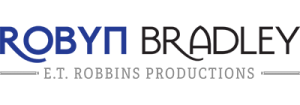My Approach to AI for Copywriting and Content Writing
Let’s address the elephant in the room. Do I use ChatGPT in my work for clients?
The short answer: Yes.
Keep on reading to understand why.
Note: I reviewed and updated this policy on August 18, 2025.
Why do I use ChatGPT as part of my content writing and copywriting process?
Using ChatGPT saves me* time without sacrificing quality. I find that I’m producing better content, thanks to my collaboration with ChatGPT. This is a win for me and for my clients.
*Note: I can only speak for myself. Not every person who claims to be a writer will produce high-quality content with ChatGPT or another large language model (LLM). It takes an already-talented writer (who is willing to learn) to get sound output from AI tools. Strong writers can recognize both good and weak writing.
How I use large language models (LLMs) like ChatGPT
I use ChatGPT as a collaborator. I don’t simply prompt it, take what it spits out, and call it a day.
My initial process is straightforward:
- I train ChatGPT on the client’s brand voice. (I have a video where I walk through my process.)
- From there, ChatGPT develops a set of thorough rules it follows when working on content for that specific client.
- I sometimes add in other rules, as needed, to avoid the typical “look” of AI. (For example, I might tell ChatGPT not to use em dashes.)
But here’s the thing: To make this approach work, I will only accept clients who provide access to subject matter experts (SMEs).
I will no longer create content, such as blog posts or white papers, based solely on research. Anyone can do that. To me, THAT is slop (whether AI writes it or not).
But interviewing an SME is where the magic happens: the unique angles, the cool anecdotes, the original stuff that I (or ChatGPT) can’t get from anywhere else. So everything I write begins with SME content.
Once I have the SME interview or interviews done (along with any other research/prep work), I’m ready to begin drafting.
My drafting process with ChatGPT
When I collaborate with ChatGPT on a piece of content, such as a blog post, I work systematically. I remind ChatGPT of the client we’re writing for, the rules, and the goal of the content.
I also provide ChatGPT with the necessary notes, research, and interview transcripts. I share publicly available content with ChatGPT, such as published blog posts and website pages. When it comes to interview transcripts, I take care to remove anything proprietary in nature before sharing them with ChatGPT. I have turned off the “improve the model for everyone” option within ChatGPT’s settings. (Currently, ChatGPT is my primary LLM. I occasionally use other AI tools, such as Perplexity, Claude, and Gemini.)
Here’s an overview of my drafting process:
- Once ChatGPT understands the assignment, we tackle the content section-by-section, starting with the title. I’ll ask ChatGPT to brainstorm titles. I’ll either pick one or use one of the options as a springboard.
- Once we’ve settled on a title, I’ll ask ChatGPT to draft an outline. I’ll provide feedback (as needed), and ChatGPT will revise it accordingly.
- Once we’ve finalized the outline, we’ll begin the drafting process. Sometimes, I’ll start by putting together a messy intro and giving it to ChatGPT for refinement. Other times, I’ll ask it to brainstorm three options, and I’ll pick one (or do a mash-up between a couple). Again, this is a collaborative process.
- Once we’ve finalized the intro, we’ll move on to the next section. Each time I offer feedback to ChatGPT, it continues to learn what I’m looking for. This is a good thing. That means subsequent output gets sharper.
I revise each section as we go along, as needed. Sometimes my revisions are more involved than others. When that happens, I’ll lob my revision back to ChatGPT for its feedback (and each time I do so, it continues to learn). Occasionally, ChatGPT produces a section that I can run with as is. (I take this as a positive sign. I’m prompting it better, and it’s responding better.)
Will my content be flagged as AI-generated if you run it through an AI checker?
Possibly. Maybe even probably.
AI checkers are fickle things. I don’t recommend wasting time putting copy through AI checkers.
Keep reading to understand why.
Whether AI was involved in the content creation process isn’t the thing to fixate on.
Instead, what matters is this:
- Is the content any good?
- Will it resonate with the target audience?
- Does it answer a question, solve a problem, or share a unique POV?
- Does it read well?
- Is it formatted correctly?
- And once published, how does it perform?
If the quality is there, who cares if AI was part of the process? Google doesn’t.
A study by Ahrefs found no evidence that Google penalizes AI content.
Bottom line: My goal is to produce high-quality content for my clients.
High-quality content should satisfy the target audience first. I also consider Google’s infamous E-E-A-T acronym (experience, expertise, authority, trustworthiness) when drafting content.
If I can create kick-ass content faster and better by using ChatGPT, then that’s precisely what I’m going to do.
Fun fact: I wrote this AI policy without AI. 🙂
I don’t always turn to ChatGPT. It depends on the client, the content assignment, the subject matter, and the timeline. ChatGPT is simply one tool in my toolbox. The ultimate tool is still my noggin.
